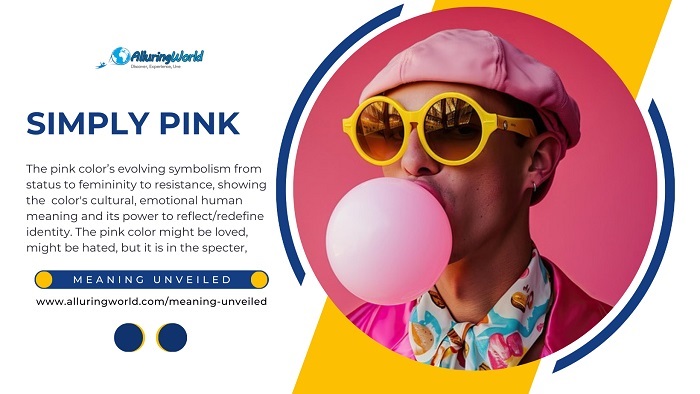Read time ca. 4 minutes
Every color carries powerful cultural and other meanings, and few shades of the color palate have had a more complicated journey than pink. Long associated with femininity, especially in modern Western societies, pink has a surprisingly fluid and diverse history across different times and cultures. Understanding how pink has symbolized both feminine grace and masculine strength sheds light on the way colors reflect social norms, identities, and transformations in human culture.
Pink and Femininity in the Modern World:
Across much of the Western world now, pink is powerfully linked with femininity. Girls are surrounded by pink toys, clothing, and advertising from the earliest years as they are babies, reiterating its link with softness, sweetness, and delicacy, and this continues even through the teen and much of the adult years. This link was forcefully established in the 20th century, particularly following World War II, as the worlds of fashion and advertising opened their doors to pink as the ideal color for women and girls.
In addition to that, pink also became synonymous with feminine power, especially in subsequent decades. Feminist movements reappropriated the color to challenge stereotypes, as they were turning pink into a powerful statement rather than a passive one, and movements like the pink ribbon for breast cancer awareness or pink-themed protests used the color to express power, solidarity, and strength in a traditionally patriarchal world.
Historical and Global Views of Pink as Masculine:
Historically, pink was not always a girl’s color because in 18th century Europe, pink was fashionable for both men and women, especially for aristocrats who would like to showcase their wardrobe. At that time it was seen as a lighter, more refined version of red – a color that signified power, wealth, and virility, and there are also portraits from the time which often show noblemen wearing pink coats or waistcoats, signifying taste and confidence, rather than femininity.
In other cultures, pink has also had different meanings, where for example in Japan, the color is linked with cherry blossoms, reminding one of both beauty and the fleeting nature of life, and commonly celebrated by men and women alike. In Indian cultures, men frequently wear pink to ceremonies and parties, and it is considered a festive and vibrant color rather than a gendered one.
Shifting Boundaries and Cultural Perceptions:
As mentioned above, the strict correlation of pink and femininity is a relatively recent and Western trend. Honestly, it wasn’t until the 1940s that department stores began to neatly separate pink for girls and blue for boys; a reversal of earlier tastes, and advertisers and consumer fashion reinforced the division over time, solidifying cultural expectations about the color.
While, in classic wear and fashion, pink is clearly feminine or submissive when men wear it, its function is rapidly changing in fashion and design nowadays, so celebrity and fashion designer glamour have reimagined pink as fashionable and expressive and challenged historical expressions of masculinity. Pink blouses, suits, and accessories now creep into popular culture and high-fashion, conveying self-confidence and creativeness.
Pink as a Symbol of Emotion and Identity:
Beyond the concept of gender, pink evokes emotional warmth, tenderness, and love among those that wear it and love seeing pink. It softens aggression and symbolizes harmony in color psychology, and even in LGBTQ+ communities, pink has had deep cultural significance, such as the use of the pink triangle, which was reclaimed as a symbol of pride after its use to stigmatize gay men during the Holocaust.
Nowadays, pink is also a popular choice in branding, social media, and design, where it conveys youthfulness, positivity, and calm, but its versatility across settings, that being romantic, playful, political, or defiant, it reflects how it has moved beyond narrow definitions and into broader cultural meaning.
Conclusion:
Overall, the color pink has undergone centuries of evolving symbolism, from aristocratic privilege to feminine allure, from rigid gender roles to a tool for resistance and expression. Its shifting significance within both feminine and masculine realms reminds us that color is not simply viewed – it is cultural, emotional, and deeply human. In embracing pink in all its forms, we are embracing the power of symbolism both to mirror and redefine identity.

